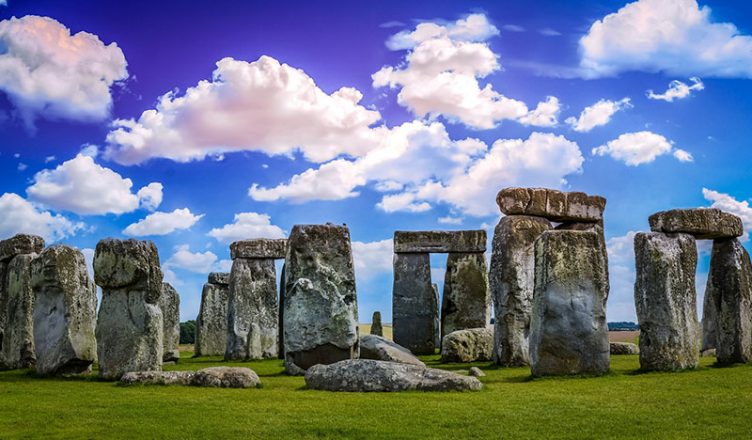
Stonehenge, a name that evokes images of ancient rituals, astronomical alignments, and a profound sense of mystery, stands as one of the world’s most iconic and enigmatic prehistoric monuments. Nestled on Salisbury Plain in Wiltshire, England, this colossal stone circle has captivated imaginations for millennia, drawing millions of visitors eager to connect with a past shrouded in the mists of time. But beyond the popular imagery, what are the true facts that define this remarkable UNESCO World Heritage Site?
This article will delve deep into the heart of Stonehenge, exploring its rich and complex history, highlighting its main attractions, providing practical travel tips, guiding you on the best time to visit, suggesting accommodation and culinary delights, and outlining your transportation options to ensure a seamless journey to this ancient wonder.
A Tapestry Woven Through Time: The History of Stonehenge
Related Articles about Whispers of the Ancients: Unveiling the Enduring Mysteries of Stonehenge:
- Geneva: A Traveler’s Guide to the City of Peace and Precision
- Athens: A Journey Through Time – Your Ultimate Travel Guide
- Copenhagen: A Symphony of History, Charm, and Modernity
- Vienna: A Symphony of Imperial Grandeur and Modern Charm
- Madagascar: An Odyssey to Earth’s Last Eden
The story of Stonehenge is not a singular event but a prolonged saga of construction, adaptation, and enduring significance spanning over 1,500 years, from approximately 3100 BC to 1600 BC. It wasn’t built in a day, or even a century; rather, it evolved through distinct phases, each adding new layers to its monumental purpose.
Phase 1: The Earliest Beginnings (c. 3100 BC): The initial phase of Stonehenge saw the creation of a large circular earthwork, comprising a ditch and bank, with a ring of 56 Aubrey Holes. These holes, named after the 17th-century antiquarian John Aubrey, are believed to have once held timber posts or bluestones. At this stage, the monument was primarily a ceremonial landscape, possibly marking a burial ground.
Phase 2: The Arrival of the Bluestones (c. 2600 BC): This phase marks a significant shift with the introduction of bluestones, smaller stones weighing up to four tons each, transported from the Preseli Hills in Pembrokeshire, Wales, over 150 miles away. The logistics of moving these stones are a testament to the ingenuity and determination of its builders. The exact method of transport remains a subject of debate, with theories ranging from overland routes using rollers and sledges to a combination of land and sea. These bluestones were arranged in a double arc within the earthwork.
Phase 3: The Reign of the Sarsen Stones (c. 2500 BC): The most iconic and imposing phase of Stonehenge’s construction saw the erection of the massive sarsen stones. These gargantuan sandstone blocks, some weighing up to 50 tons, were quarried from the Marlborough Downs, about 20 miles north of the site. The lintels, horizontal stones that crown the uprights, were skillfully shaped with mortise and tenon joints and tongue and groove joints, demonstrating an advanced understanding of stonework. This phase established the familiar horseshoe and circular arrangements of the sarsen trilithons (two upright stones topped by a lintel) and the outer sarsen circle.
Purpose and Beliefs: The precise purpose of Stonehenge continues to be a subject of intense speculation and research. However, compelling evidence points towards its function as a sophisticated astronomical observatory. The alignment of the monument with the summer solstice sunrise and the winter solstice sunset is undeniable, suggesting a deep understanding of celestial cycles and their importance for agricultural societies. Ritualistic ceremonies, religious worship, and even burial practices are also strongly indicated. The presence of human remains found within and around the site reinforces its connection to life, death, and the spiritual realm.
Decline and Rediscovery: Over centuries, Stonehenge fell into disrepair, its stones toppled and its purpose obscured by time. It was later rediscovered and documented by antiquarians, leading to a surge of interest and subsequent preservation efforts. Today, it stands as a powerful reminder of our ancestors’ capabilities and their profound connection to the natural world.
Unveiling the Main Attractions: More Than Just Stones
While the imposing sarsen stones are the undeniable centerpiece, Stonehenge offers a richer experience than simply gazing at ancient rocks.
- The Stone Circle: This is the main event, a mesmerizing arrangement of megaliths that evoke a sense of awe. The sarsen stones, forming the outer circle and the inner horseshoe of trilithons, are the most visually striking. The smaller bluestones, though less prominent, add another layer of intrigue with their mysterious origins.
- The Avenue: This ceremonial pathway, approximately one mile long, connects the River Avon to the stone circle. Walking along the Avenue, you can begin to imagine the processions and rituals that once took place here.
- The Heel Stone: Standing alone outside the main circle, the Heel Stone marks the direction of the summer solstice sunrise. It plays a crucial role in understanding Stonehenge’s astronomical significance.
- The Ditch and Bank: The original earthwork enclosure provides context for the stone structures and hints at the monument’s earliest phases.
- The Visitor Centre: A modern and essential component of the Stonehenge experience, the Visitor Centre offers a wealth of information to enhance your understanding. It houses an award-winning exhibition showcasing artifacts unearthed from the site, including tools, pottery, and personal items belonging to the people who built and used Stonehenge. Interactive displays, detailed reconstructions, and insightful narratives bring the history and theories to life. The centre also features a shop and café.
Planning Your Pilgrimage: Essential Travel Tips
A visit to Stonehenge requires thoughtful planning to maximize your experience and respect this sacred site.
- Book Tickets in Advance: Stonehenge is incredibly popular, and booking your tickets online and in advance is highly recommended, especially during peak season. This guarantees your entry and often offers better prices.
- Choose Your Entry Time Wisely: Consider the time of day for your visit. Sunrise and sunset offer magical light and a more atmospheric experience, though these times are often more crowded. Mid-morning or late afternoon can provide a more tranquil experience.
- Respect the Site: Stonehenge is an ancient and sensitive monument. Stay on the designated paths, do not touch or climb on the stones, and take all your litter with you.
- Dress Appropriately: Salisbury Plain can be exposed and the weather unpredictable. Wear layers, comfortable walking shoes, and bring waterproofs, even on seemingly sunny days.
- Allow Ample Time: While the stone circle itself can be seen relatively quickly, factor in time for the Visitor Centre, the walk along the Avenue, and to truly absorb the atmosphere. A minimum of 2-3 hours is recommended.
- Consider an Audio Guide or Guided Tour: For a deeper understanding of the history, theories, and significance of Stonehenge, consider an audio guide or joining a guided tour offered by English Heritage.
The Golden Hours: Best Time to Visit Stonehenge
The "best" time to visit Stonehenge is subjective and depends on your priorities.
- For Atmosphere and Solstice Magic: The summer solstice (around June 20th/21st) is a truly unique time, drawing thousands of people to witness the sunrise align with the Heel Stone. However, be prepared for immense crowds and a very different experience. The winter solstice (around December 21st/22nd) offers a similarly powerful alignment with the sunset and a less crowded, albeit colder, experience.
- For Fewer Crowds and Pleasant Weather: Spring (April to May) and Autumn (September to October) generally offer a good balance. The weather is usually mild, the crowds are thinner than in the summer, and the landscapes around Stonehenge are beautiful.
- For Budget Travelers and Maximum Tranquility: Winter (November to February), excluding the solstice periods, offers the fewest crowds and often the lowest prices. However, be prepared for cold weather and shorter daylight hours.
Peak Season: June, July, and August are the busiest months due to school holidays and warmer weather.
A Cozy Retreat: Nearby Hotels
While Stonehenge itself is a rural site, the nearby town of Salisbury offers a wide range of accommodation options.
-
Luxury Hotels:
- The Chapter House: A boutique hotel in the heart of Salisbury, offering elegant rooms and excellent service.
- The Legacy Rose & Crown Hotel: A historic coaching inn with charming rooms and a traditional atmosphere.
-
Mid-Range Hotels:
- Premier Inn Salisbury: A reliable and affordable option, offering comfortable and modern rooms.
- Travelodge Salisbury Central: Another budget-friendly choice conveniently located.
-
Bed & Breakfasts and Guesthouses: Salisbury has numerous charming B&Bs and guesthouses offering a more personal touch and often a delicious breakfast. Look for options within walking distance of the city center for easy access to amenities.
Closer to Stonehenge: For a more immersive experience, consider staying in smaller villages surrounding Stonehenge, such as Amesbury or Netheravon. These often have smaller inns and guesthouses. However, options are more limited, and you’ll likely need a car.
A Taste of Wiltshire: Local Food
Wiltshire boasts a rich culinary heritage, with a focus on fresh, local produce.
- Traditional Pub Fare: You’ll find excellent pubs in Salisbury and surrounding villages offering classic British dishes. Look for Sunday roasts, fish and chips, and hearty steak and ale pies.
- Local Produce: Wiltshire is known for its dairy farms, so try local cheeses and cream. Sausages made with local pork are also a popular choice.
- Afternoon Tea: Indulge in a quintessential British experience with afternoon tea, featuring delicate sandwiches, scones with clotted cream and jam, and a selection of cakes and pastries. Many hotels and tea rooms in Salisbury offer this delightful treat.
- Seasonal Delights: Depending on the season, you might find dishes featuring local game, berries, and apples.
- Salisbury Market: If you’re visiting on a market day (typically Tuesday and Saturday), you can sample local produce, artisanal foods, and street food.
Navigating Your Way: Transportation Options
Getting to Stonehenge and exploring the surrounding area is achievable through various transportation methods.
- By Car: This offers the most flexibility. Stonehenge is located just off the A303. There is ample parking available at the Visitor Centre. Satnav postcode for the Visitor Centre is SP4 7DE.
- By Train: The nearest train station is Salisbury. From London Waterloo, trains run regularly to Salisbury. The journey takes approximately 1.5 hours.
- From Salisbury to Stonehenge:
- Stonehenge Tour Bus: A dedicated hop-on, hop-off bus service runs from Salisbury train station directly to Stonehenge. This is a convenient and popular option.
- Taxi: Taxis are readily available at Salisbury train station. The journey to Stonehenge takes about 20-30 minutes.
- Bus: Local bus services connect Salisbury to Amesbury, which is a short distance from Stonehenge. However, this requires more walking or a further taxi ride.
- From Salisbury to Stonehenge:
- By Coach: National Express coaches operate services to Salisbury from various locations across the UK.
- Organized Tours: Numerous tour operators offer day trips to Stonehenge from London and other major cities. These often include transportation, entry tickets, and sometimes guided tours, offering a hassle-free option.
Exploring the Area: If you have a car, you can easily explore other nearby attractions such as the historic city of Salisbury with its magnificent cathedral, the charming market towns of Shaftesbury and Warminster, and the picturesque New Forest National Park.
Stonehenge is more than just a collection of ancient stones; it’s a testament to human ingenuity, a window into our ancestral beliefs, and a place that continues to inspire wonder and contemplation. By understanding its history, appreciating its attractions, and planning your visit wisely, you can embark on a journey that will leave you with a profound connection to this enduring enigma of the ancient world. The whispers of the ancients await.








